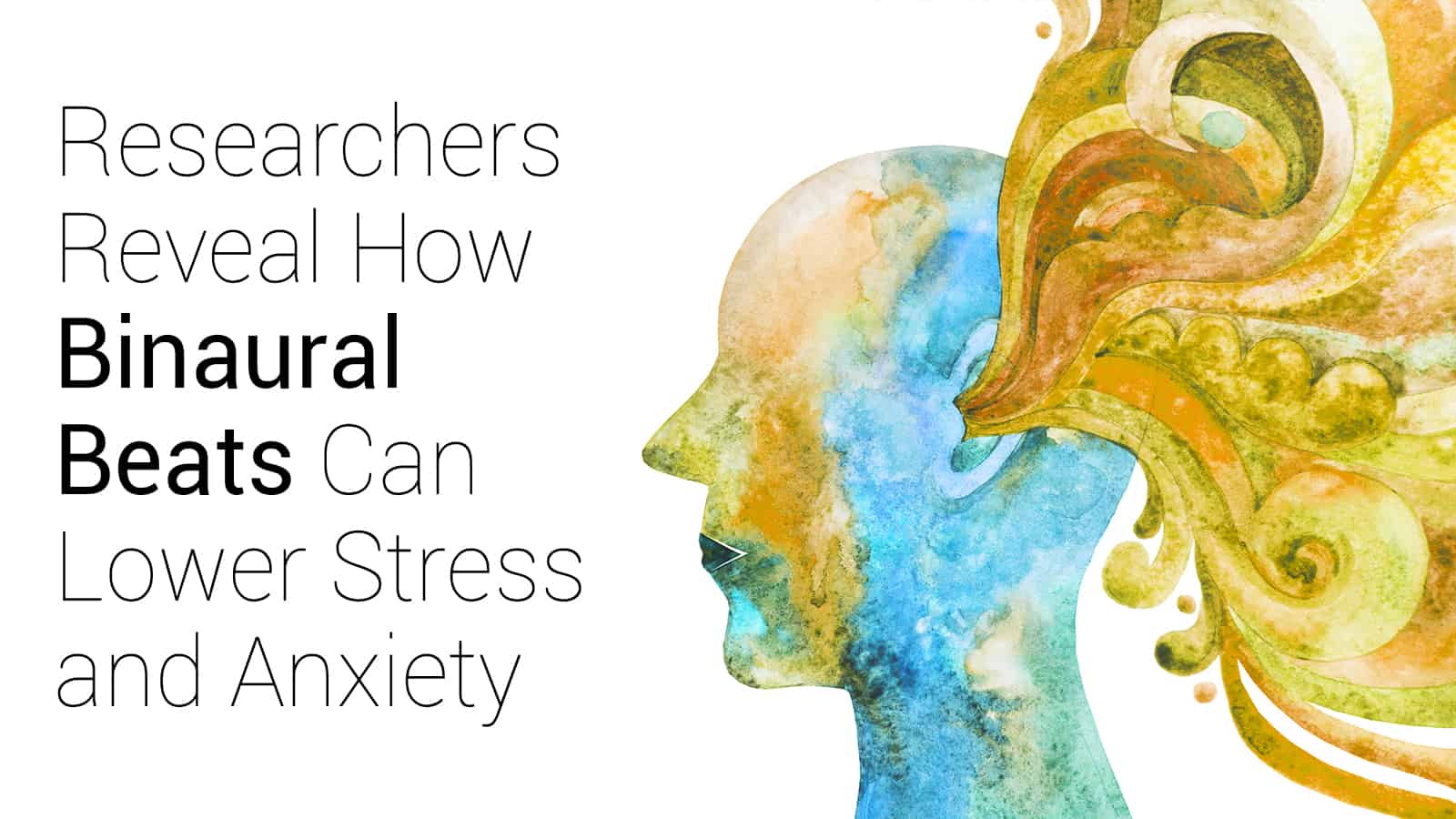Many remedies exist for combating stress and anxiety. Have you gone through the list and still can’t seem to calm your brain? Then you might want to try binaural beats. When you hear two tones of varying frequencies in different ears, your brain still processes them as a single tone. The term binaural beats simply refers to the different frequencies playing in each ear.
Here’s an example so you can visualize it:
Suppose you’re listening to a sound that plays in your left ear at 132 Hertz (Hz). In your right ear, you have a sound playing at a frequency of 121 Hz. Your brain will perceive the sound as the difference between the two frequencies, or 11 Hz. So, the tones will merge together, so it seems as though you only hear one tone, though two different ones are actually playing in each ear.
The history of binaural beats
Contents
A Prussian meteorologist named Heinrich Wilhelm Dove discovered binaural beats in 1839. Also called “brain entrainment,” many researchers consider them a weird invention rather than a medical treatment. Binaural means “relating to both ears.”
Playing a tone with a slightly different frequency in your left and right ear. For example, 440 Hz in one and 430 in the other, causes the waves to travel separately to your inferior colliculus. This part of your brain gathers auditory input and sends signals to your mind about the sounds. There, the tones merge into a wave of a new frequency, which occurs at the difference between the two. So, you’d hear a frequency of 10 Hz using the example above.
Binaural beats are an auditory illusion since the singular tone doesn’t exist. Researchers have found that the beats have to have a frequency of less than 1000 Hz to work, and the difference between the sounds can’t exceed 30 Hz. The tones must also play separately in each ear. Binaural beats have been used in music to help tune instruments such as pianos and organs. However, scientists have begun to look into this alternative therapy for their possible health benefits.
Evidence supporting the use of binaural beats
A 2018 study found that listening to binaural beats for a certain amount of time can affect a person’s mood and sleep patterns.
The authors of the study explain the classifications of frequencies and how they affect our brains:
- Delta waves: Binaural beats that occur in the delta category have a frequency of 0.5–4 Hz. These waves induce a dreamless state during sleep. In the study, people who listened to this type of binaural beat had much more profound sleep than others, according to EEG brain scans.
- Theta waves: Theta waves have a frequency of 4–7 Hz. Theta patterns have been associated with REM sleep, heightened creativity, and improved meditation.
- Alpha pattern: Binaural beats with alpha waves have a frequency of 7–13 Hz and promote a relaxed state.
- Beta pattern: Binaural beats with a beta pattern occur at frequencies of 13–30 Hz. Since it occurs at a higher frequency, it promotes a state of concentration and alertness. However, it can also increase anxiety as the frequency goes up.
- Gamma waves: This frequency pattern occurs at a range between 30–50 Hz. The authors of the study explain that gamma waves help maintain a state of arousal while a person goes about their day.
Researchers reveal how binaural beats can lower stress and anxiety (among other benefits)
Binaural beats have a similar effect on health as a regular meditation practice. But the practitioner feels the effects much quicker with this alternative therapy. Here are some of the reported benefits:
While the studies on binaural beats have been relatively small, they show promise in helping people relax and unwind in our hectic world today. Some researchers show skepticism about the benefits of binaural beats, but as long as people feel better while listening to them, that’s all that matters in the end.
Binaural beats between 1 and 30 Hz can create the same brain wave patterns that occur during meditation, according to researchers. When you hear a sound at a certain frequency, your brainwaves will adjust to match that frequency. In this way, you can experience similar benefits that you would get from meditation without actually having to practice it.
How to experience binaural beats
You will need a pair of headphones and an audio recording of this music, as well as a comfortable, relaxed setting. Many people listen before falling asleep, but you can use this method at any time you feel high anxiety or stress levels. You can easily find recordings of binaural beats online on platforms such as YouTube, or you can download them straight to your phone. Just make sure the beats have a frequency of less than 1000 Hz and that the difference between the tones doesn’t exceed 30 Hz.
Get in a comfortable position and make sure you have an environment free of distractions. Try to listen for at least 30 minutes per day so that your brain can get used to the frequencies and begin to reset to match the tones. If you don’t notice a difference with the recording you’ve found, you can always choose a different frequency.
Adjust the time you listen, depending on your mood and anxiety levels. If you feel high levels of stress, you may want to hear for a more extended period until the feeling subsides. Always listen with headphones to get the maximum benefit. Finally, make sure you don’t listen while doing anything that requires your full attention, such as driving.
A controlled study on binaural beats
While most studies on the health benefits of binaural beats have been small, some of them do show evidence to support claims that it can help with anxiety, mood, and performance. For example, one blinded study in 29 people found that listening to binaural beats in the beta range (16 and 24 Hz) helped with performance on a task as well as reduced negative moods. They compared this to listening to binaural beats in the theta and delta (1.5 and 4 Hz) range or pure white noise and found that the beta range helped the most.
Another controlled study in roughly 100 people about to undergo surgery also found that binaural beats dramatically decreased pre-operative anxiety compared to similar recordings without binaural beats as well as no audio. In the study, researchers found that patients’ anxiety levels decreased by 50% on average for those who listened to binaural beats.
Uncontrolled study on binaural beats
Another uncontrolled study asked eight adults to listen to a CD with binaural beats played at delta (1 to 4 Hz) wave frequencies for 60 days consecutively. The participants filled out surveys before and after the 60-day period that asked questions about their quality of life as well as mood. The answers on the review indicated that participants experienced significant improvements in quality of life as well as reduced anxiety. Of course, since the study had no controls, relied on participants to report data, and only included eight people, more extensive studies will need to be done to confirm these results.
However, a larger and more recent controlled study looked at the effectiveness of binaural beats in 291 patients admitted to the emergency area of a hospital. The researchers observed large decreases in anxiety in patients. The participants listened to audio with binaural beats compared to those who listened to sounds without binaural beats or no audio at all.
Side effects associated with binaural beats
No side effects have been reported from listening to binaural beats, but you’ll want to make sure you don’t listen for long periods at high volumes. Prolonged exposure to sounds at 85 decibels or higher can result in hearing loss. Traffic, for instance, produces sounds at around 85 decibels. Also, wearing headphones for extended periods can cause earwax buildup as well as sore feelings in the ears, so you may not want to listen at bedtime.
Final thoughts on how binaural beats can lower stress and anxiety
The studies on the effectiveness of binaural beats have been relatively small. However, they proved that the frequencies of the beats could help with anxiety, moods, attention, and memory. Also, studies have shown that they can decrease chronic pain and improve sleep quality. To get the most out of binaural beats, listen daily for at least 30 minutes. That amount of time means your brain waves can adjust to the new frequencies.
Of course, binaural beats won’t eliminate anxiety and stress. But they can certainly serve as a helpful tool in relaxing in our fast-paced world. If you combine this stress-reduction therapy with other relaxation techniques such as meditation, yoga, deep breathing, aromatherapy, or other forms of sound therapy, you will notice even more benefits. If you try out binaural beats, let us know how you enjoy them on our Facebook page!
Source: Researchers Reveal How Binaural Beats Can Lower Stress and Anxiety- powerofpositivity.com

